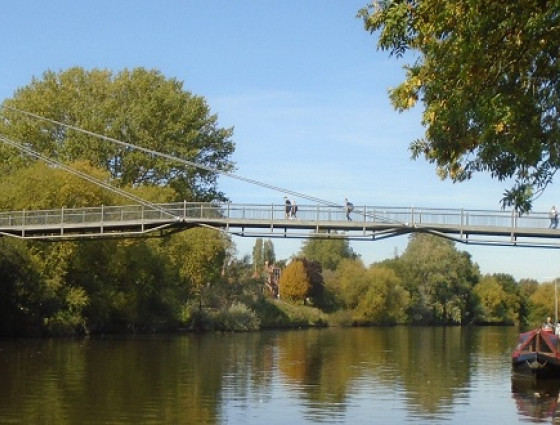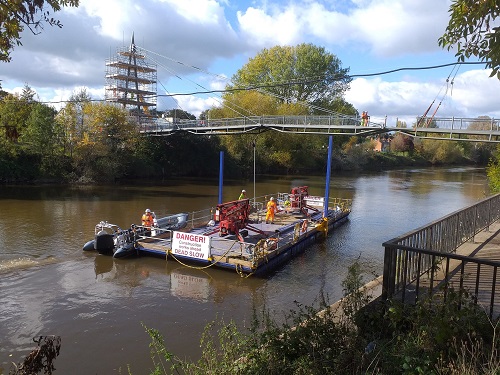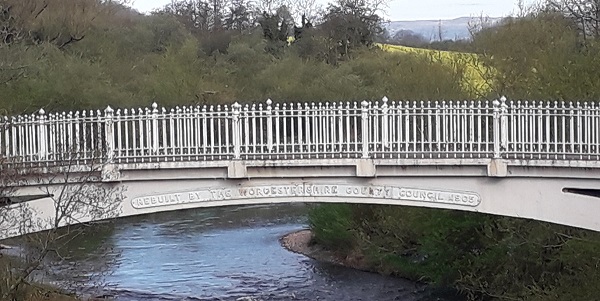
Completed walking and cycling schemes
Information on completed walking and cycling schemes that we have completed across the county.
Bromsgrove Walking and Cycling Improvements
Background
Bromsgrove was a focus for us, as making the transport network more efficient, particularly at peak travel times, will help to reduce congestion.
As Bromsgrove had a very limited infrastructure to support walking and cycling journeys, this forced some local people to drive short distances, adding to congested routes.
The £3.4million improvements for walking and cycling routes formed part of the wider transport and highways plan for the area and delivered an additional six recognised walking and cycling pathways. The works also included improving other recognised cycleways across Bromsgrove.
The new routes provided a new and improved link between the railway station, town centre, schools, as well as employment and residential areas.
The plan
There are many improvements planned as part of the investment. Proposed plans include:
- an additional six walking and cycling routes which will create a more robust network throughout Bromsgrove
- upgrade of existing controlled crossings on Kidderminster Road and Market Street being made into toucan* crossings and improving the toucan crossing on Birmingham Road by making the path wider.
- paths in some areas will be widened to accommodate use by pedestrians and cyclists
- the majority of the cycle routes will remain on quieter, low traffic roads, with a small number of shared use paths being introduced
- path and road resurfacing to improve journey comfort
- new LED lighting on pathways
- clear signage that will indicate the length of time to walk and cycle to areas of the town centre to promote walking and cycling
- dropping of kerbs and the
- introduction of tactile paving at crossing points to improve accessibility
*A toucan crossing is a type of pedestrian crossing that also allows bicycles to be ridden across as the same time as pedestrians as they are wider than a pelican crossing or puffin crossing.
Sabrina Bridge
Sabrina Bridge in Worcester was first opened in 1992. Since then the footbridge has been incredibly well used, providing a link between the city centre to businesses, amenities and university buildings on the west side of the river.
The refurbishment of this bridge was a high priority for the Council, in particular the replacement of the bridge deck itself.
The new bridge deck is a composite material. The material was specifically chosen as it performs much better in wintery conditions than the current wooden slats.
The new decking will also provide more stability to the structure of the bridge. Works were completed at the end of 2020.

Stanford bridge
Improvement works are now completed on the 1905 historic Stanford bridge, located over the river Teme in the village of Stanford.

The bridge, restricted to pedestrians and cyclists, is an early example of reinforced concrete work and is a Listed Grade II Monument.
Repairs were required to improve the condition of the structure and included a full refurbishment of the main span and brickwork flood arches.
The works, delivered by Worcestershire County Council with their contractor and Designer, Ringway and Jacobs respectively, have not significantly changed the visual look of the bridge with materials matching the existing as close to its original form as possible.
The main challenge was delivering the work under the three-tonne weight limit, as the weight of the scaffold hanging off the bridge posed a risk to the structure.
So, a phased approach was taken, scaffolding the two end abutments first, transferring the weight off the main span, followed by the middle section. This, together with alternative material such as aluminium, kept the weight to a minimum. The risk of falling debris was prevented by a full encapsulation of the scaffolding.
The concrete bridge replaced a single span iron structure, a typical example of the transition of Iron bridges to the newer concept of reinforced concrete. The bases of piers visible during low water levels are likely to be those of the brick bridge of the early 18th century.
The earliest recorded bridge in this location was a wooden one built in 1548.
 Facebook
Facebook Twitter
Twitter Email
Email WhatsApp
WhatsApp Messenger
Messenger